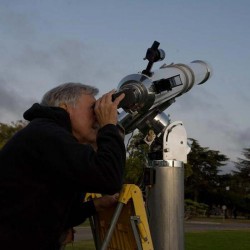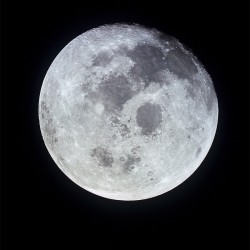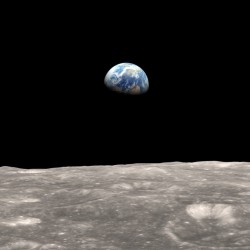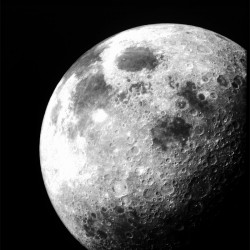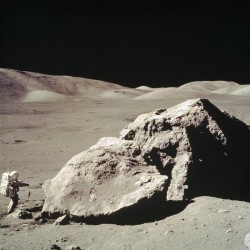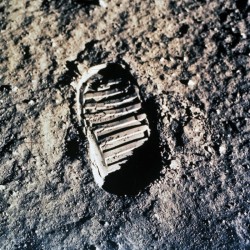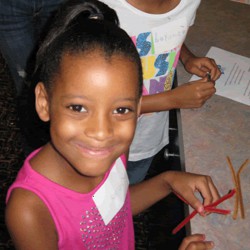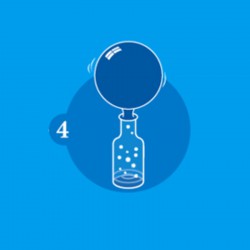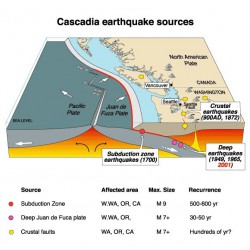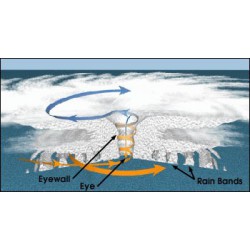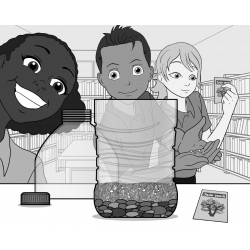Sort
New items
-

Speculative Stories
In this flexible activity patrons imagine future uses of AI tools, and...
-

Ethiquest
In this short activity patrons consider the ethical dilemmas posed by...
-

Data Bites
Patrons create a paper supervised learning machine, and use it to sort...
Activities There are 601 items.
-
What Do You See in Today’s Moon?
1 Review(s)Learners read or listen to a cultural story describing a shape identified in the Moon's surface features. 1851
Check It Out
Teacher's Guide Provides classroom connections, key concepts, connections to science standards, and additional resources. -
Moon in Action
Learners go outside on a clear evening and view the sky to see the Moon for themselves. 0
Check It Out
-
Moon over My Town
In this activity, community members of all ages are invited to contribute photographs — taken with cell phones, film cameras, or more sophisticated equipment — of the Moon. 0
Check It Out
-
Dance of the Moon and Oceans
This is an activity about the tides. Learners discover how the Moon's gravitational pull causes the level of the ocean to rise and fall twice a day along most coastlines. 0
Check It Out
-
Crater Creations
4 Review(s)This is an activity about impact craters. Learners will experiment to create impact craters and examine the associated features. 19740
Check It Out
How-to Video -
Lunar Surface
1 Review(s)In this activity, learners will make a model of the Moon's surface and to consider the geologic processes and rocks of each area. 3096
Check It Out
Teacher's Guide Provides classroom connections, key concepts, connections to science standards, and additional resources. -
Future Moon: The Footsteps of Explorers
1 Review(s)Learners model how impacts throughout the Moon's history have broken rocks down into a mixture of dust, rocks, and boulders that cover the lunar surface. 2060
Check It Out
-
UV Kid
2 Review(s)In this activity, children use common craft materials and ultraviolet (UV)-sensitive beads to construct a person (or dog or imaginary creature). 8798
Check It Out
How-to Video -
Making a Gas You Can See
1 Review(s)In this short demo/activity, a balloon with baking soda in it is stretched over the mouth of a flask or bottle containing vinegar. 852
Check It Out
How-to Video -
Build an Earthquake-Resistant Structure
1 Review(s)Create an earthquake simulator using a cardboard shoebox, marbles, and rubber bands. Children and tweens can build structures out of toothpicks and marshmallows, and use the earthquake simulator to test the structures. 1404
Check It Out
How-to Video -
Building for Hurricanes
1 Review(s)Participants are given simple materials and design requirements, and must plan and build a tower as tall as possible that will hold up a tennis ball while resisting the force of wind from a fan. 481
Check It Out
Teacher's Guide Provides classroom connections, key concepts, connections to science standards, and additional resources. -
Life on Mars? Nurturing Life
A garden can be a reminder of life’s needs and our connection to the planet we call home. Children consider the requirements of living things and compare the surface conditions on Mars to those found on Earth as they plant gardens. Gardening tips and options for indoors and outdoors are provided. 0
Check It Out
How-to Video Implementation Guide Provides extensive background information, facilitation outline, materials shopping list, extended supporting media suggestions, correlations to national standards, and more. Teacher's Guide Provides classroom connections, key concepts, connections to science standards, and additional resources.




